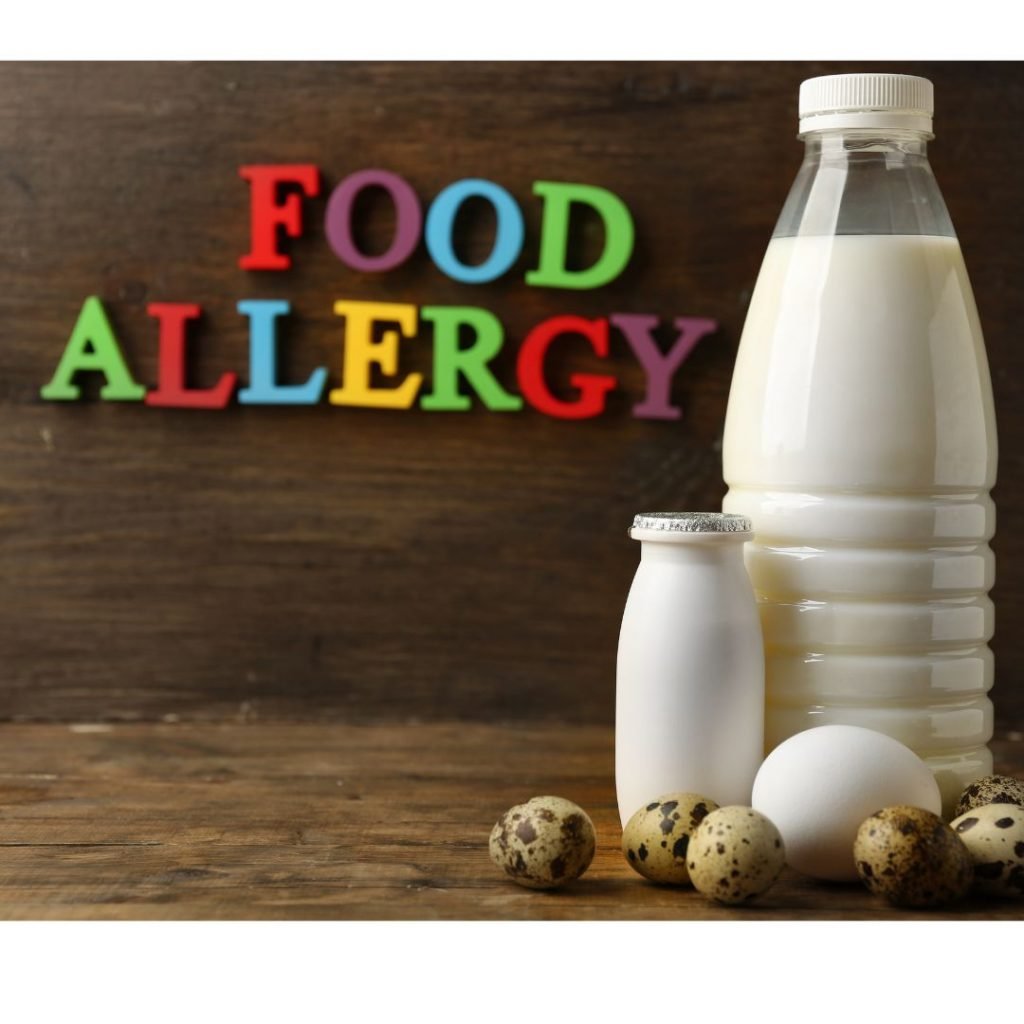
The prevalence of food allergy among children ranges between 3% – 5%. But it increases more in children who suffer from atopic dermatitis. Differently, among adults, the prevalence of the disease ranges between 1% – 2%. This article provides you with everything you need to know about food allergies.
Because the intestinal mucosal protective mechanisms are immature in the first months after birth, the intestine absorbs large amounts of allergen food particles, which stimulates the production of Immunoglobulin E-type allergic antibodies, or other local immune reactions.
80% of children with allergies to milk, soy, or eggs develop an ability to accept these foods by the age of three, while allergies to peanuts, nuts, and fish are generally permanent.
The most common signs and symptoms of a food allergy include:

In some people, a food allergy can trigger a severe allergic reaction called anaphylaxis. This can cause life-threatening symptoms, including:
The most prominent of these symptoms include the following:
Emergency treatment for anaphylaxis is critical, as, if untreated, it can cause coma or even death.
The main causes and risk factors of food allergy include:

Food allergy occurs when the immune system mistakenly treats proteins in food as a pathogen. As a result, a number of chemicals are released and these are the substances that cause allergy symptoms.
Almost any food can cause an allergic reaction. But there are some foods that are responsible for most food allergies. The most common foods that cause allergic reactions are:
Eating certain foods may cause itchiness, dizziness, and even anaphylaxis soon after you start exercising. Not eating for a few hours before exercising and avoiding certain foods may help prevent these problems.
Food intolerance or reaction to another substance you eat may cause the same signs and symptoms as a food allergy, such as nausea, vomiting, cramping, and diarrhea.
Depending on the type of food intolerance you have, you may be able to eat small amounts of problem foods without a reaction. But, by contrast, if you have a true food allergy, even a small amount of food may trigger an allergic reaction.
The most well-known of these cases include:
You may not have adequate amounts of some enzymes needed to digest some foods.
Sometimes food poisoning can resemble an allergic reaction. For example, the bacteria in spoiled tuna and other fish can create a toxin that leads to harmful reactions.
Some people experience gastrointestinal reactions in addition to other symptoms after taking certain food additives.
Some fish, such as tuna or mackerel, that are not refrigerated properly and that contain large amounts of bacteria, may also contain high levels of histamine that elicit symptoms similar to those of a food allergy.

While celiac disease is sometimes referred to as gluten sensitivity, it doesn’t lead to anaphylaxis.
The main risk factors include the following:
You are at increased risk of developing a food allergy such as asthma, eczema, and hives.
If you already have an allergy to one food, you are more likely to develop an allergy to another type of food. Similarly, if you have other types of allergic reactions, such as hay fever or eczema, your risk of developing a food allergy is greater.
Food allergies are more common in children, especially young children and infants. As you grow older, your digestive system matures, and your body is less likely to absorb food or food ingredients that cause allergies.
Asthma and food allergy usually occur together. When this happens, food allergy and asthma symptoms are likely to be more severe.
Complications of a food allergy can include:
The following tests can help a doctor diagnose a food allergy:
A health care professional places the diluted foods on the person’s arm and gently punctures the skin. Any reaction, such as itching, swelling, or redness, indicates that the person may have an allergy. People may need to repeat this test several times.
This test looks for antibodies to specific food proteins and can indicate an allergy.
This is the most scientific way to accurately diagnose a food allergy as a doctor gives a person the food allergen in increased amounts, and monitors symptoms under close supervision.
Here are the different types of allergy treatments:
For a mild allergic reaction, over-the-counter medications or antihistamines may help reduce symptoms. These medications can be taken after exposure to an allergen to help relieve itching. However, antihistamines cannot treat a severe allergic reaction.
You may need an emergency epinephrine injection for a severe allergic reaction and go to the emergency room.
Many people with allergies carry an epinephrine auto-injector. This device is a combined syringe and concealed needle that injects a single dose of medication when pressed into your thigh.
The most important prevention methods include:
Leave a comment